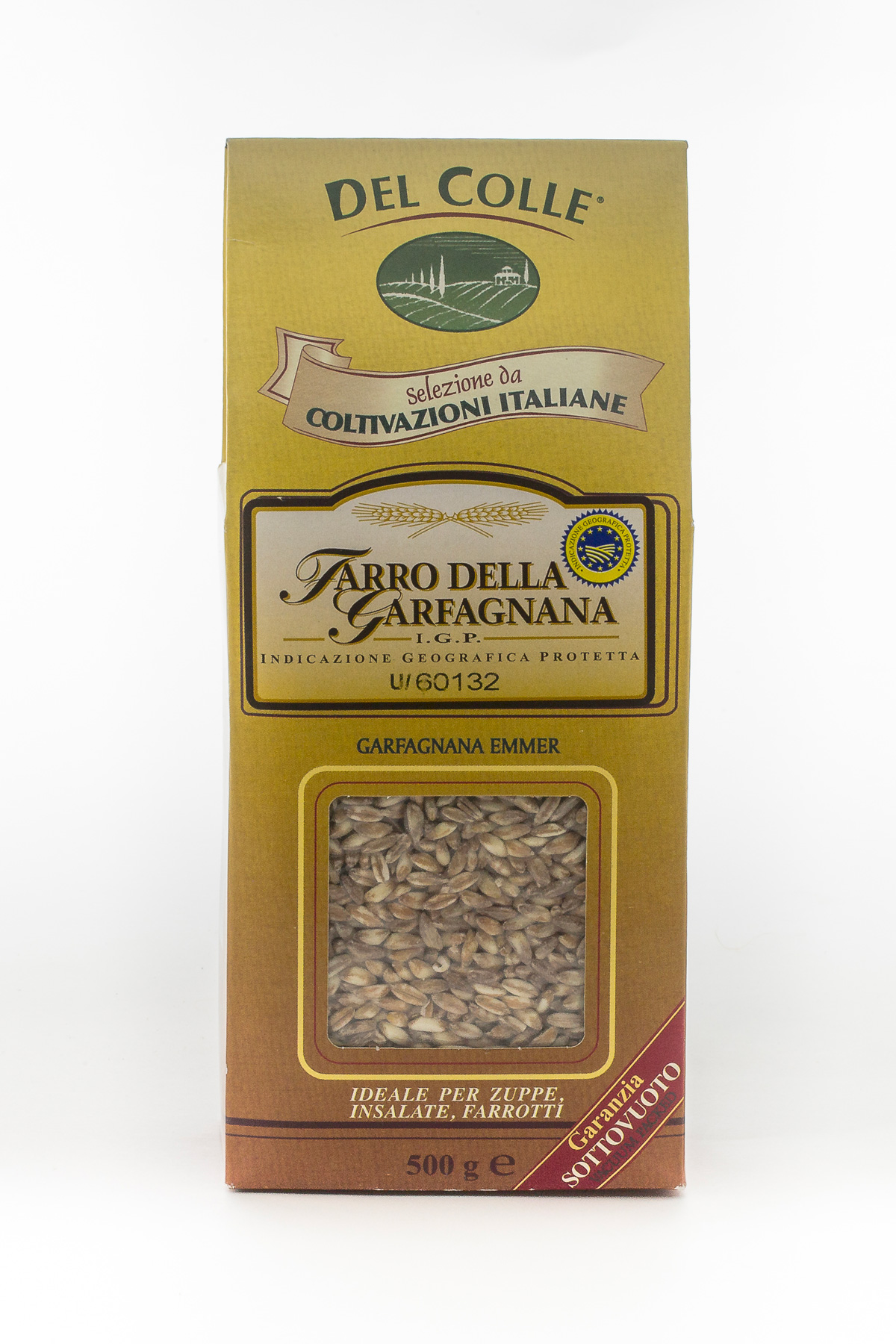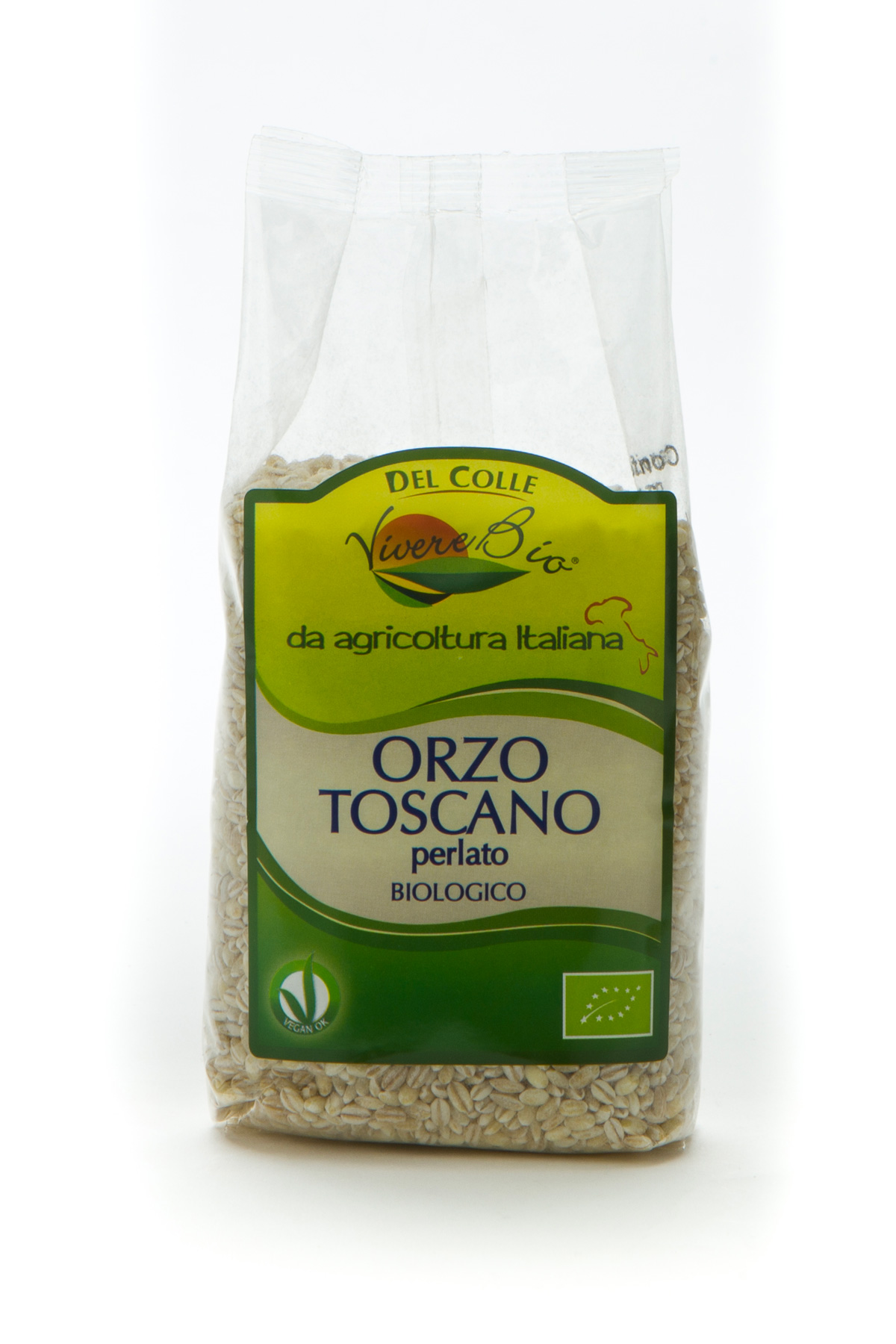DEL COLLE
DEL COLLE
Company data
General information
Company Name: Del colle s.r.l.
Commercial Name: DEL COLLE
Vat number: 01630360467
Contacts
Head office
 |
LEONARDO FIBONACCI 593, 56031 PISA(PISA) |
 |
Ph. 3456512318 |
 |
Ph. 0587756627 |
First Person

Elisa Fiorito
Marketing manager
Company description
Company Details
Turnover 2021
5M - 10M
% export 2021
<25%
Workforce
20
Main Export Areas
Other Export Areas
Certification
Other certifications
Characteristics
Products produced
Price range
Main factors of competitiveness of the company
Attachments
| Company profile |
| Organic Del Colle offering |
| Eas cooking mix |
Video
Products

DEL COLLE IS THE FIRST COOPERATIVE FOR THE PROTECTION OF GARFAGNANA SPELT IGP FROM 1996. THIS SPELT IS GROWN IN THE HIGH GARFAGNANA -800MT-. THE VARIETY IS TRITICUM DICOCCUM (EMMER ), ITS GRAINS ARE LARGE , DURING THE COOKING THEY REMAIN WELL SEPARATED.

It is “Triticum dicoccum” variety cultivated according organic methods in Tuscany , one of the best land for the growth of this product. This cereal is rediscovered and appreciated thanks to its historical origins ( already in use at the time of the Roman Empire ) and thanks to the interest toward healthy nutrition. The sawing is done in autumn and it is harvested during the summer (july ). The grains are clear and tender thanks to the processes ok husking and pearling. How to cook: The time of cooking is about 20/25’ , it is easily digestible. It is the smartest variety thank to its organoleptic characteristics and its intense but delicate flavor. Ideal for warm soups , for salads , it can be cooked as rice or as first dish in place of pasta.

Cultivated in Tuscany by the organic supply chain of Del Colle. Del Colle select only varieties grown in special conditions and drained soils and this make possible a variety of barley with larger, whiter, more porous grains; a perfect yield cooking and a pleasant taste.It is low calorie, high digesyible cereal. How to cook: it can be used in a lot of recipes : soups, fresh salads , for second dishes and for the making of cakes too. It can be cooked with vegetables like rice

Tuscan chickpeas from tuscan agricolture. They are cultivated in a special soil , giving the product an intense but delicate flavor and a creamy texture. The sawing is done during the spring and it is harvested during the summer , from June to September. How to cook : ideal for dish plates , salads , soups. They can be consumed like creams added to fish plates. Excellent to accompany meat plate. They can be simply boiled and eaten with EVO and roasted bread to taste them best.

Borlotti beans play an important role in the field of Italian gastronomic tradition, especially in the north of Italy. This variety is valuable thank to its organoleptic characteristics given by the special, drained soil. How to cook : borlotti beans are traditional ingredients to cook soups, soups with cereals (excellent with spelt)and vegetables and perfect to cook “pasta and beans”. Indicated with salads, with side dishes and with plates made of meat, excellent for creams.

The Cannellini beans are cultivated in the north west region of Italy where a capillary net of irrigation systems makes the soil fresh, drained and fertile. Thanks to this, the peel is soft and tender, the flavor is delicate and it is easily digestible. How to cook : ideal for traditional recipes with tomato souce, garlic and sage. Ideal four soups with cereals or vegetables . Ideal for creams , ideal with pasta or spelt and excellent simply boiled with EVO.

Tender peel , green/brown color , intense taste , great estate of cooking. The Italian lentils are a very valuable variety. Excellent for soups and creams.

ORGANIC FARMER SOUP A MIX OF TASTE AND TEXTURE: FROM THE CREAMY BEANS TO THE CRUNCHY CEREALS THROUGH THE SWEAT PEAS , A RARE TASTE OF ANCIENT FLAVOURS

It is “Triticum dicoccum” variety cultivated according organic methods in Tuscany , one of the best land for the growth of this product. This cereal is rediscovered and appreciated thanks to its historical origins ( already in use at the time of the Roman Empire ) and thanks to the interest toward healthy nutrition. The sawing is done in autumn and it is harvested during the summer ( july ). The fact of being whole makes the product high in fiber and in starches. How to cook : it is the smartest variety thank to its organoleptic characteristics and its intense but delicate flavor. Ideal for warm soups , for salads , it can be cooked as rice or as first dish in place of pasta , especially for people aware of healthy eating , choosing minimally refined cereals.